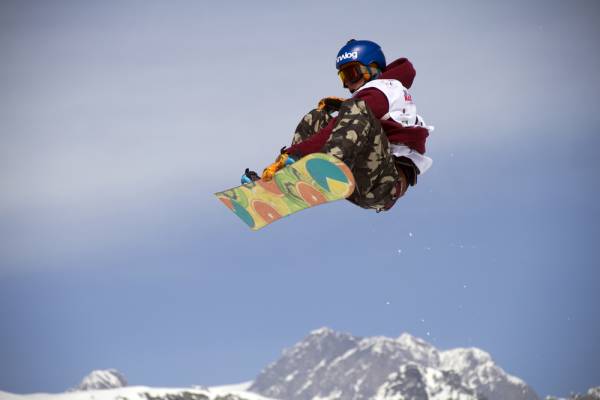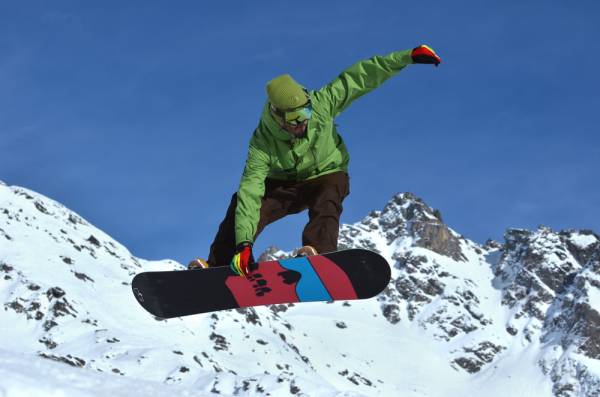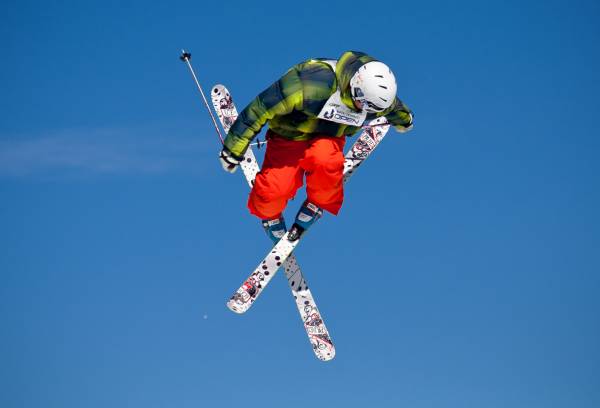One of the benefits to living in Colorado is my weekly venture up the Rocky Mountains. There’s something awe inspiring about being out in nature and finding a little relief from the merry-go-round of work and the big city grind.
There are plenty of life lessons to learn in those mountains, too. Nature has a way of giving us perspective and appreciation, as well as serving as an outlet for a new and fun adventure. Being at 11,000 feet and riding down a mountain is in and of itself an outside-the-box experience – both thrilling and humbling.
Learning to Fall With the Mountain
Recently I headed up the slopes for the first run of the day with two other people – one, an expert snowboarder, and the other, a first-time rider. The first-timer was a nervous wreck as she surveyed the steep terrain below the gondola. I tried calming her with a sarcastic quip about making sure to watch out for the bears. “It’s not the steeps that will get you, it’s those Colorado bears,” I commented and winked.
While my cheesy humor lightened the mood briefly, the novice rider was still noticeably apprehensive. She asked the group for the easiest way down the mountain. The expert in the group chimed in with her Yoda-like words of wisdom:
The trick is to not go too slow. You need to get enough speed to control yourself. Sure, the green runs are flatter, but they are actually harder in a way because on a flat surface you’re more likely to catch an edge and fall. If you take the blue runs down, you’ll be able to get enough speed to practice your technique and when you do fall, you’ll fall with the mountain.
The gondola fell silent and everyone nodded in agreement. Right then and there, I remembered why I love snowboarding. Sure, I love to have fun and enjoy the view, but more than that, I do it to grow and learn to “fall with the mountain.” Learning how to fall with the mountain is one of those great life lessons you can learn from alpine sports and apply to other areas in life.
Here are five life lessons I have learned from the mountain and how they correlate to the work we do in the boardroom, gym, or field of play.
1. Don’t Always Take the Easiest Run or the Hardest
Life is full of green (easy), blue (intermediate), and black (advanced/expert) runs. Knowing which run to take is essential. Some charge in with overconfidence and reckless abandon to tackle the black runs without being prepared. It’s a good way to get hurt. Conversely, there are those who only hang on the bunny slopes. Show me someone who only does the green runs, and I’ll show you someone who never improves.

In order to have a balanced approach, warm up on the green runs, challenge yourself on the blue runs, and then grow on the black runs. It’s the blue runs where we hone our craft, take risks, and learn to fall with the mountain. Once you’re in expert territory, the stakes are higher and you’ve got to be purely present.
“Learning how to fall with the mountain is one of those great life lessons you can learn from alpine sports and apply to other areas in life.“
While blue runs may help give you that extra push early on, be cautious of jumping waist deep into black powder runs. I didn’t spar for the first six months when I started boxing because nothing gives a boxing student a bad experience like sparring too soon and getting beat up in the process. Make no mistake, though – the only way to be a better boxer is to know what it’s like to get hit. Similarly, if you’re going to be an expert skier, you’re going to have to face that mountain and spar with those black runs.
2. Control Your Speed
Like the martial arts juxtaposed with yoga, there’s a time to speed it up and a time to slow it down. Both have their place in taking us to a level of awareness. Going too slowly in the mountains can cause you to lose balance, catch an edge, and take a spill. Ironically, going too fast can put you in the same predicament.
The critical element isn’t the speed. It’s the control. One of the great tools boxers and martial artists use for speed training is the jump rope. Jumping rope slowly is surprisingly difficult and usually results in your feet getting tangled. You need enough speed to maintain rhythm and balance. This is what the expert snowboarder was saying to the novice – skip rope too slowly and your feet will get tripped up. Go too quickly and you’ll find yourself out of control and with the same end result.

3. Keep Your Tips and Your Head Up
In alpine sports this means staying present and keeping your eyes on the prize. There’s an old adage that says, “If you aren’t crashing, you aren’t skiing.” Fair enough, but more important than the crash itself is what you learn from one.
“To be an expert skier, proficient athlete, or successful executive takes the ability to focus on the present moment.“
A few weeks back, I caught an edge while looking back up the mountain trying to spot my girlfriend. After taking several moments to gather my thoughts and let the bells stop ringing in my head, I remembered a crucial lesson in sport and life – keep your eyes on the ball. I learned the same lesson many times in boxing, as well. One momentary slip of the mind can be costly. To be an expert skier, proficient athlete, or successful executive takes the ability to focus on the present moment.
4. Ski With Those Better Than You
Whether you take a private ski lesson or hit the slopes with friends who are faster and more advanced, challenging yourself is critical to your growth. When I first started sparring in boxing, I worked quite a bit with a professional fighter about my size. He gave me a bloody nose every week for six straight months.
Two other things happened: the cartilage in my nose got tougher and I got better. Either way, the bleeding stopped after six months.
5. Wear a Helmet
My brother spent several weeks in a hospital brain trauma ward for an issue unrelated to skiing. One of the nurses asked me if I wore a helmet riding a bike or when I was skiing. Up to that point, I hadn’t made a habit out of either. The timing of that conversation during my brother’s stay was enough to convince me otherwise.
“While there are no sure things, safety does wonders for your confidence, and confidence does wonders for your performance.“
Whatever sport or activity you do, if there is an equivalent to a helmet, wear one. I’m a pretty old-school guy, but mouthpieces, helmets, and safety precautions are beyond important. We can’t perform our best if we don’t feel safe. While there are no sure things, safety does wonders for your confidence, and confidence does wonders for your performance.

It’s All About Finding Balance
Like life itself, alpine sports come down to balance, both literally and figuratively. Whether it’s the speed we choose, the terrain we pick, or the mechanics of the activity itself, balance plays a huge role. Striking the right balance can be tricky, but finding your ways down (or up) the mountain relies on your willingness to try a new and more challenging run.
The green runs not only take you longer, but if you’re too cautions, you just might fall anyhow.
You’ll Also Enjoy:
- Finding Balance in Our Physical, Personal, and Professional Lives
- How to Achieve Bite-Sized Bits of Balance in Life
- The Difference Between Fear and Love in Fitness
- What’s New On Pulse Beat Fit Today
Photos courtesy of Shutterstock.






